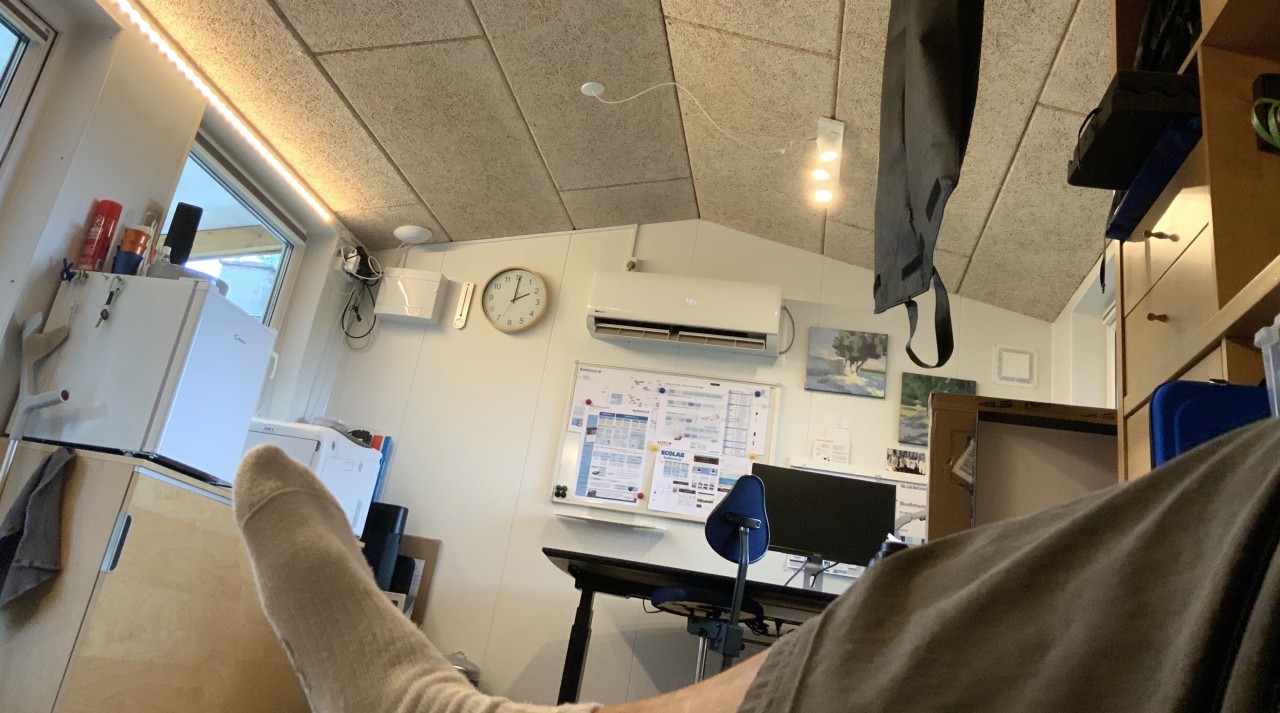Disclaimer: I am an international facilitator with no interest in any particular tool or service. I wish to share best practices for remote leadership as an alternative to the increasing cancellation of important meetings. If in a hurry, skip the intro and jump straight the nine recommendations below.
Control and Leverage the Catalytic Changes
I firmly believe in making the world a better place – one leader at a time. Unfortunately, Covid19, aka the Coronavirus, seems to allow all the rulebooks and proper leadership behaviors to be tossed out the window.
Your people, your dependents, and all your stakeholders need you now more than ever. Not for comfort, but to make plans and develop the best practices that will allow your business to continue and grow despite the inconvenience of having to be smart about a severe health risk.
Even without comparison to other viruses, influenzas, or pneumonia, Covid19’s minuscule probability of infection and severe illness is offset by the immense impact of potential death … and thus, the overall risk is too high for any leader to allow a team member the exposure.
Consequently, international conferences, conventions, airports, and increasingly gatherings of any size become no-go zones. Meetings will have to be moved. Rescheduling can not be avoided.
However, the meetings should not be moved into an uncertain future, creating a vacuum now and leaving an impossible hurdle a few months or quarters down the road.
Instead, the meetings need to be moved into the digital space where new tools and better ways of working are ready and waiting. Add to this our planet’s struggle under the impact of conventional transportation, and we have a real obligation and unique opportunity:
Now is the time to become a world-class practitioner of remote leadership.
And for the record, I do prefer the term “remote leadership” as there is nothing virtual about the experience in those who chose to follow you. Your leadership must be real, effective, and appreciated – only now, it must also be delivered at a distance!
I’ve been working with talents and executive leadership teams across all corners of the world for nearly 15 years. Of course, we’ve talked remote leadership, and below is the continuously updated list of Top9 best practices that hopefully will allow you to maintain speed and not allow the Covid19 to isolate you from those who depend on your leadership.
The list is shown with its corresponding LeapCard, ordered in three groups of three, starting with the actions entirely within your circle of influence, followed by servicing your team over time and finally arriving at the initiatives that may need organizational approval.

You – right now
1. Add concurrent channels and rehearse the fall-back
With little time to prepare, the dreaded conference call may be the first substitute for in-person encounters. If you move meetings to the phone, add complementary channels to strengthen the dialogue and serve as a fall-back if a connection fails. Create a meeting’s corresponding group on Messenger, WhatsApp, or any of the other chat services out there. Let the participants of your call share notes and enjoy the torrent of parallel feedback as you ask questions during an otherwise traditional one-way media.
2. Express and request the emotional quantifiers
Normally, we rely heavily on sight for a statement’s emotional quantifiers. As claimed by many, upwards of 70% of all communication is related to body language. We give up this (in-)sight with phone calls and webcam meetings where only a few can be seen at the same time, and even fewer have reliable, good live cameras. Without a clear, visual presence, you need to offer a different way of showing and sharing emotions in the conversation. Make sure to express your own state and ask for theirs. Like this: “I know you can’t all see me right now, but your ideas just put a big and relieved smile on my face.” Or the other way around: “Remember, I can’t see all of you, so please drop a word to describe how you feel about this in our WhatsApp thread.”
3. Rework materials and up the eye candy
In the conventional meeting room, you’re the big attraction. Your eyes, voice, hands, and movement adds the needed pizzaz and clarification to crowded slides that stay on the screen for 3-5 minutes each. Not so when online. Here, on average, you need something to change every 20 seconds to keep the same level of attention! It does not have to be a new slide; simply build the text or have a detail fade in. If you can’t update your shared slides with animations, use PowerPoint’s or the meeting service’s digital pen to draw directly on the screen; circle items of importance, and draw arrows between connected objects. With enough time, move increasingly away from the corporate drab of fact-filled, text-heavy slides that only become harder to read when viewed on the receiving screen share, tablet, or smartphone. To connect emotionally use “the thousand words” of strong stand-alone images, and leverage the ever-growing communities of free photos such as those available in Unsplash.
Your team – the coming days
4. Create and maintain a contract of remote collaboration
Suddenly meeting remotely and not in person will be a significant change for many. Allow the team(s) to frame their own rules by creating their own contract of remote collaboration. When and how do you meet? Which tools are used for what topics? Distill to a few simple rules and use the process to gauge each participant’s self-confidence in any new services and digital devices. Arrange for fun trials and make sure all have tried essential features before they are needed in real projects. Lastly, make sure to re-introduce the social aspect as per the following two suggestions.
5. Break for gossip and go for virtual coffee
The lack of small-talk when settling down for a conventional meeting reduces the patience of participants not physically present. Meetings often become more focused and with less debate. While perhaps a pleasant development, there is also the risk of participants growing isolated. Use frequent breaks without topics to let the conversation flow, allowing participants to catch up on items that would usually be covered in the hallway heading for the coffee machine. Speaking of coffee, remember to offer your team members the virtual equivalent of grabbing a cup to catch up socially. When the urge for caffeine arrives, ask the remote team member to get a cup and meet you online in five minutes. As with breaks in the remote meeting, such “Skype Coffee” moments are primarily to connect and maintain the social relation.
6. Force new connections and vacate the web’s center
As with all new ways of working, remote meeting tools represent a muscle that needs training. Invest the time saved from traveling in asking remote buddies to experiment and come up with new use cases that enhance the team’s overall capability. Think and allow for engagements outside of the box; if paintball was an OK team-building in the past, perhaps team-play in Fortnite is not far off? Regardless, make sure best practices do not have to pass through you but become part of the team’s own, continuous maintenance of their contract of remote collaboration mentioned above.
Your organization – the coming weeks
7. Get new tools and leverage their features.
On any given day, I cycle through a dozen services, meeting my network and key clients on the platform of their choosing. Microsoft Office. Skype. Zoom. FaceTime. Teams. Trello. Slack. Asana. Salesforce. GoToMeeting/Training. WhatsApp. Messenger. LinkedIn. Google. Youtube and Vimeo. And the extras to deliver a deep online, collaborative learning experience: Simplero. Thinkific. CrossKnowledge. Corsizio. Prezi. Typeform. Zapier. Kahoot. Mentimeter and Klaxoon. No kidding.
Each platform offers a new take on how we can meet and be productive together in a digital space. Regardless of your choice, take the time to use not just the 30% that solves your immediate problem but also the next 20% that perhaps will open up for new engagements. Steep learning curves are a thing of the past, and I am reasonably sure you’d be surprised about how different and capable a virtual meeting room is compared to the one, now half-empty down the hallway. Concurrent use of Mentimeter questions or full-fledged meeting platforms like Klaxoon may well be the only real answer to the travel-weary organizations not willing to wait out the potential pandemic.
8. Dry-run and co-facilitate complex meetings
With all the exciting potential of the readily accessible choices above, please plan for extensive dry-runs prior to challenging discussions. Like your choice of conference facilities, it is nice to meet in a place you’ve been to before and know how to turn on the lights. If your gatherings are growing, do as you would in any other large meeting and ask for help with both structure, timing, and minutes. Most meeting services offer co-facilitation, allowing a second set of eyes to scan the incoming chat and results of tapping into the team’s wisdom using advanced real-time voting.
9. Co-lead locally and seek to allow trusted eyes
Lastly, don’t forget the social context of your remote team members. Perhaps they have a desk in a safe co-location or office hub. Or maybe they sit with colleagues from other teams where you could ask their manager to be your eyes and ears on location? Many matrix organizations already work with shared leadership, and with barriers on traveling, there is a need to revisit these constellations to allow for new eyes to be truly trusted locally.
Thank you for taking the time to consider these nine pieces of proven recommendations. Hopefully, the ideas can be of use to you and your colleagues. Feel free to comment, and to share with anyone seeking to maintain productivity while dealing with the acceleration of new realities in a travel-restricted world. Remote leadership is everything normal leadership is, only harder — and with Covid19, it is no longer an option.





